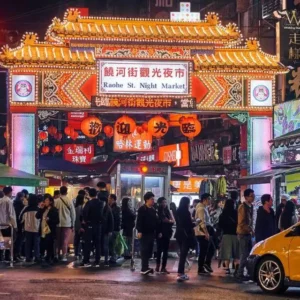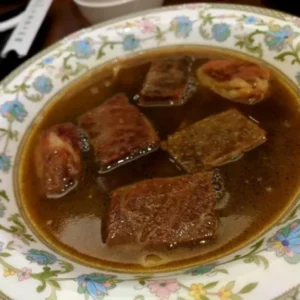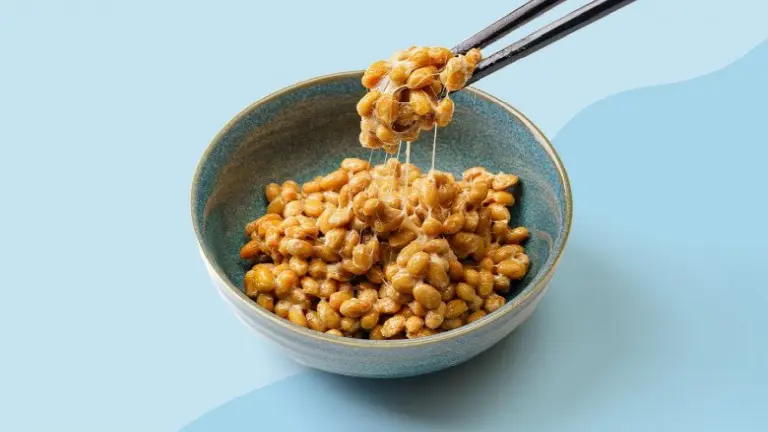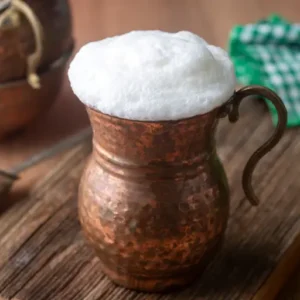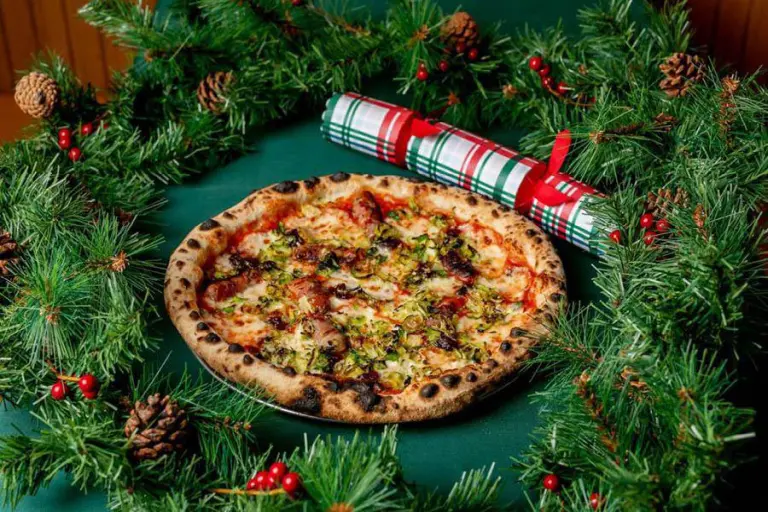When visiting Malaysia, one of the most delightful experiences for food lovers is discovering the country’s rich and vibrant street food culture. Among the many unique treats you’ll find, Nyonya Kuih stands out as one of the most colorful, diverse, and intricately shaped desserts in Southeast Asia.
A Sweet Legacy of Culture and Migration
Nyonya Kuih is more than just a pretty snack—it’s a culinary symbol of the Peranakan heritage, a fusion of Chinese and Malay cultures that dates back hundreds of years. The word “Nyonya” refers to the Peranakan community (descendants of Chinese immigrants who settled in Southeast Asia), while “Kuih” simply means “cake” or “confection” in the Malay language.
Brought to Malaysia by early Chinese settlers, these sweets evolved over generations to reflect a blend of Chinese traditions and Malay ingredients, resulting in a wide variety of kuih with different textures, colors, and flavors.
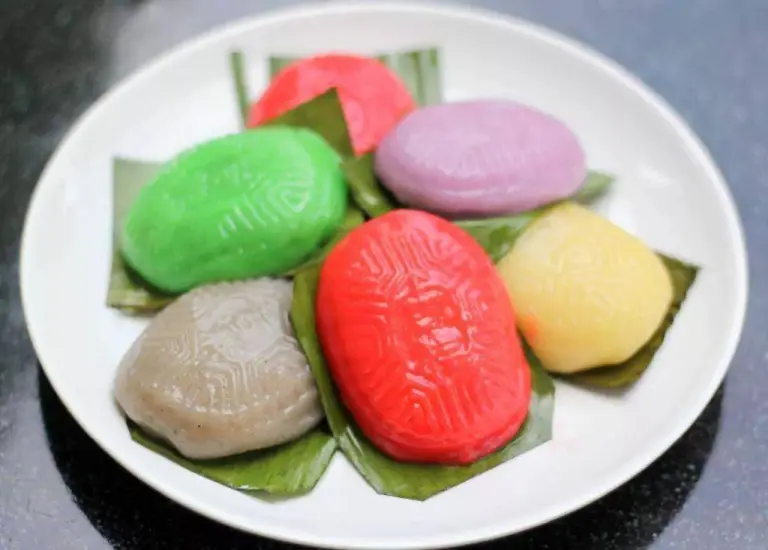
>> Must-Try Foods in Australia – Don’t leave without tasting these!
Handmade with Heart and Tradition
Despite the availability of modern equipment, many kuih artisans still stick to traditional, handcrafted methods. The process requires precision and patience, especially when it comes to measuring ingredients and shaping the cakes. Many kuih are pressed into beautifully carved molds, leaving behind detailed patterns that reflect local aesthetics and beliefs.
All-Natural Colors and Unique Ingredients
What truly sets Nyonya Kuih apart is its eye-catching rainbow of natural colors. Ingredients include glutinous rice flour, grated coconut, coconut milk, and natural dyes extracted from plants, herbs, and flowers. Some common colors include:
- Green – made from pandan leaf juice
- Blue – derived from butterfly pea flowers (very difficult to produce, showcasing the chef’s skill)
- Orange and Yellow – from turmeric or pumpkin
- Purple – sometimes from yam or sweet potato
Interestingly, wheat flour is also used in certain versions—an uncommon choice in traditional Southeast Asian pastries.
The fillings, often made of grated coconut sweetened with palm sugar or smooth mung bean paste, offer a pleasantly chewy or pudding-like texture, while the outer layer remains soft, colorful, and lightly sweet.
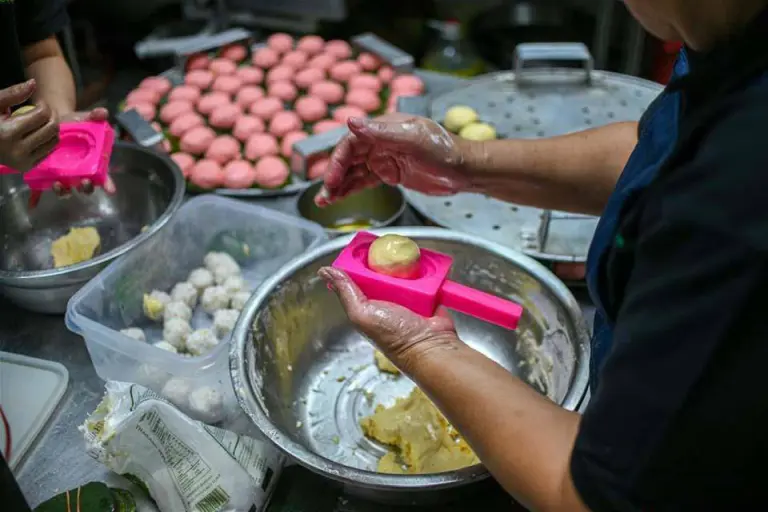
Sacred Craftsmanship: No Cutting Allowed
In line with ancient Chinese spiritual beliefs, kuih makers avoid cutting or slicing the cakes unnecessarily, as doing so is believed to bring bad luck or symbolize division. Instead, the cakes are rolled by hand into perfect orbs, then gently pressed into wooden molds adorned with floral and cultural motifs.
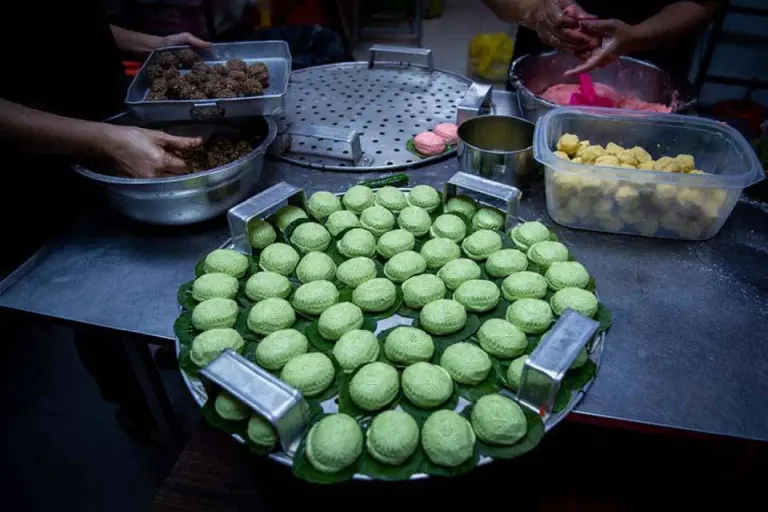
>> Signature Dishes of Bhutanese Cuisine
Where to Find Kuih in Malaysia
Nyonya Kuih is widely available throughout Malaysia—particularly in local markets, street stalls, traditional tea shops, and heritage cafés. One of the most well-known spots is RizCoconut, a family-run bakery in Kuala Lumpur run by a Chinese-Malaysian chef, famous for their vibrant kuih and dedication to preserving tradition.
You’ll also find these treats in cafés around Penang, Melaka, and George Town, where Peranakan culture is deeply rooted.
A Festival Favorite Across Southeast Asia
These colorful cakes aren’t just everyday snacks—they’re an essential part of Malaysian, Singaporean, Indonesian, and Bruneian festivals like Hari Raya Aidilfitri, Lunar New Year, and family ancestral offerings. Similar versions of kuih also appear across Southeast Asia, from Vietnam and Thailand to Indonesia, Brunei, and Singapore.
Each region puts its own spin on the treat, but the soul of the kuih—a sweet symbol of unity and culture—remains the same.
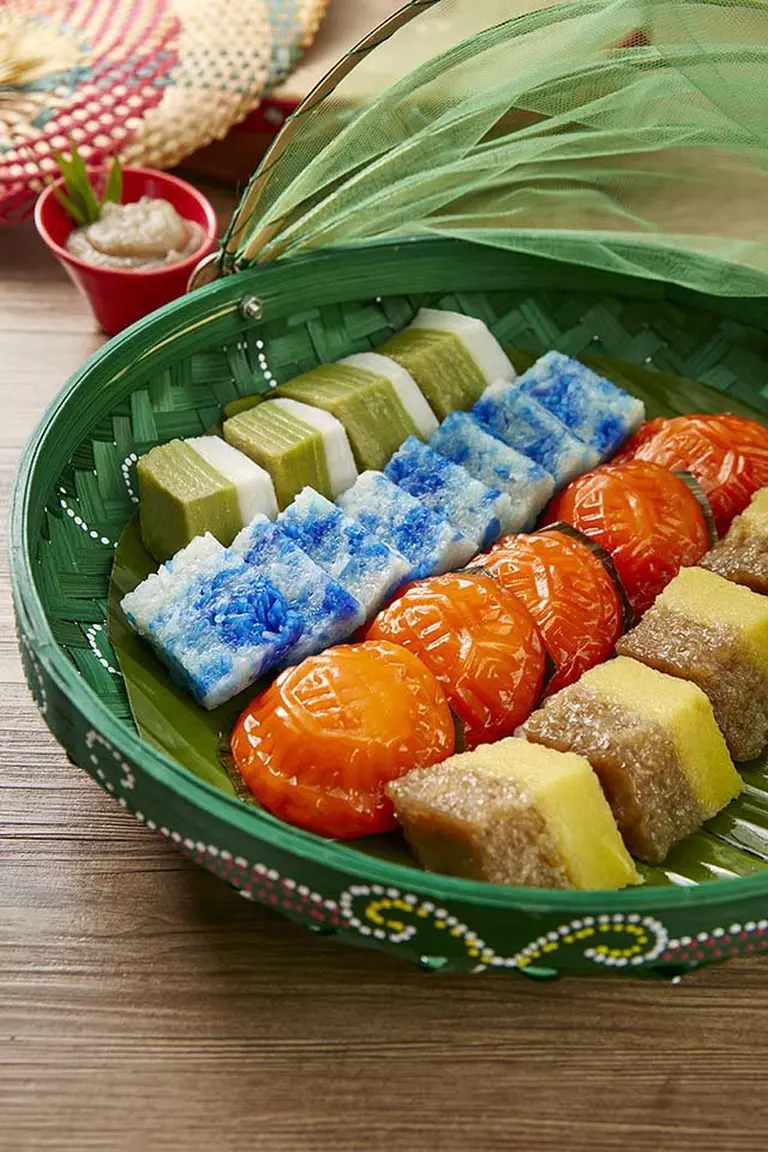
>> A strange cup of coffee and cheese that redefine Colombia
FAQ
What is Nyonya Kuih?
Nyonya Kuih (also spelled “kueh” or “kuih”) refers to a wide variety of traditional bite-sized snacks or desserts created by the Peranakan (or “Nyonya”) community, a unique blend of Chinese and Malay heritage. These delicacies are known for their stunning colors, intricate textures, and delicate flavors that often balance sweet, salty, and fragrant notes. They are a staple in Malaysian and Singaporean cuisine, typically served during tea time or festive celebrations.
What makes Nyonya Kuih so colorful and artistic?
Each kuih is like a miniature piece of edible art. Natural ingredients like pandan leaves, butterfly pea flowers, and sweet potatoes are used to create vibrant greens, blues, and purples—without artificial coloring. Many kuih feature layers, patterns, and even hand-molded shapes, reflecting the artistic flair of traditional Nyonya craftsmanship. The attention to detail is part of what makes them so visually captivating.
Are all Nyonya Kuih sweet?
Not at all! While many kuih are sweet—like Kuih Lapis (colorful layered cake) or Kuih Seri Muka (glutinous rice with pandan custard)—some are savory, such as Kuih Cara Berlauk (filled with spiced meat) or Pulut Panggang (grilled glutinous rice with spicy coconut filling). The variety is one of the joys of exploring Nyonya kuih—each piece surprises you with a new texture and flavor.
What are the key ingredients used in Nyonya Kuih?
Common ingredients include glutinous rice flour, coconut milk, pandan juice, grated coconut, palm sugar (gula Melaka), and tapioca starch. These ingredients give kuih their signature chewy, soft, or jelly-like textures. Many kuih are steamed rather than baked, preserving their moist consistency and vibrant appearance.
Where can I try authentic Nyonya Kuih?
You can find authentic Nyonya kuih in Malaysia at morning markets, traditional kuih stalls, or Peranakan restaurants—especially in heritage-rich areas like Melaka, Penang, or Kuala Lumpur. In Singapore, you’ll also find them in hawker centers and specialty bakeries. Some families still make them at home, especially for festive seasons like Chinese New Year or Hari Raya.
Is it difficult to make Nyonya Kuih at home?
Making Nyonya kuih is an art that requires patience and precision. While basic versions can be attempted at home, traditional recipes often involve multiple steps—such as extracting natural colors, layering, and steaming each part individually. Many modern cooks now turn to simplified versions or kuih-making classes to learn the techniques.
What is the cultural significance of Nyonya Kuih?
Nyonya kuih isn’t just dessert—it’s heritage on a plate. Each recipe is often passed down through generations, tied to family memories and cultural identity. They’re served during birthdays, weddings, festivals, and prayers, playing a central role in community life and celebrations. Making kuih is also a communal activity, bringing families together.
Which Nyonya Kuih should I try first?
If you’re new, start with some classics:
- Kuih Lapis – a colorful, chewy layered cake perfect for peeling apart!
- Onde-Onde – glutinous rice balls filled with molten palm sugar and coated in coconut.
- Ang Ku Kuih – red tortoise-shaped kuih with mung bean filling.
- Kuih Seri Muka – two-layered kuih with sticky rice and pandan custard.
Each bite offers a new experience—rich in taste, texture, and culture.
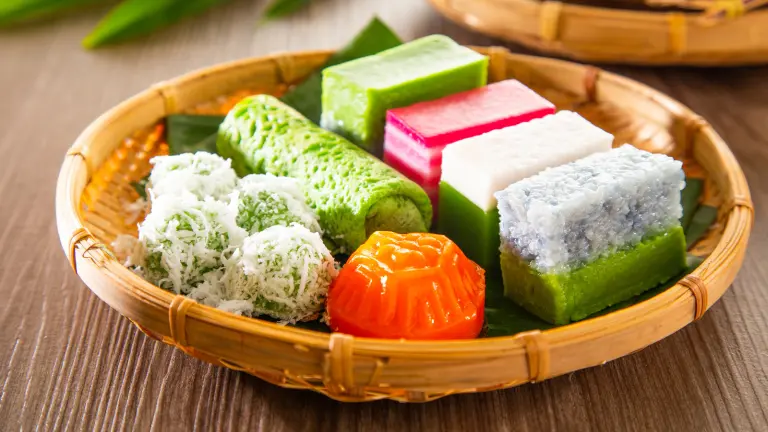
>> Amazake – The ancient Japanese superdrink making a modern comeback
More Than Just a Pretty Dessert: Nyonya Kuih isn’t just a sweet treat—it’s edible heritage. With its origins in migration, tradition, and artistry, this little cake offers a taste of Southeast Asia’s cultural harmony. Whether you’re exploring Malaysia’s vibrant street markets or relaxing in a quiet café, don’t miss the chance to try one of the region’s most iconic and Instagram-worthy desserts.

